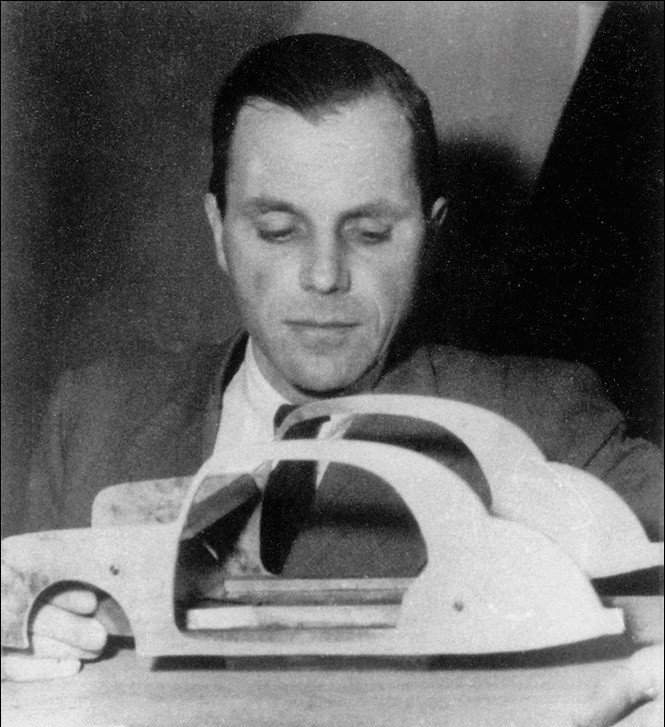Unknown engineers – The Hungarian roots of the famous Volkswagen Beetle

According to 24.hu, more than 21.5 million models of the Volkswagen Beetle were built from 1938 until the end of production in 2003, making the Bug the best-selling car of all time that was hardly changed during its 65-year history. The name is typically associated with Ferdinand Porsche, the founder of the famous car company. There are, however, two engineers of Hungarian origin without whose contribution the famous Beetle would not be the same today. This is their story.
Béla Barényi, the father of car safety
Béla Barényi (1907-1997) was born in Hirtenberg, Austria in the Austro-Hungarian Empire of Hungarian and Austrian heritage. After graduating from Vienna College, he was employed by several automobile companies including Austro-Daimler and Adler, before joining Daimler-Benz (later Mercedes-Benz) in 1939.

In 1925, he made his first designs for a “people’s car” which later became the Volkswagen Beetle, and he released his plans in 1929 but did not patent them and the plans could be freely used by anyone. When Porsche released his prototype, Barényi criticised various aspects of the safety of the car as well as its likeness to his own plans. In the ‘50s, he filed a lawsuit, which lasted years and ended with Barényi’s victory. In the end, he only demanded one German Mark of compensation, but his name became forever associated with the Volkswagen Beetle.
Barényi is also known for his contribution to the field of car safety. When he was asked about the car of the future at his interview for Mercedes-Benz, he allegedly talked for 22 minutes about his ideas on how to enhance the safety of cars in the future. After being hired by Mercedes-Benz, he became the head of the pre-development department, and patented as many as 2500 inventions including the crumple zone, the non-deformable passenger cell, and the collapsible steering column.
Josef Ganz, the inventor of the people’s car
There is another engineer who contributed greatly to the development of the Volkswagen Beetle. Josef Ganz (1898-1967) was born in Budapest as the second child of a Jewish family. His father was Dr. Hugo Markus Ganz, a German journalist for the Frankfurter Zeitung and his mother was Mária Török, a Hungarian woman. The family first moved to Vienna, then to Frankfurt am Main in 1916.
The young mechanical engineering student made his first car design in 1923. He couldn’t afford to have the prototype made, so he began publishing in various magazines about progressive car design, and soon after graduation, he became the editor-in-chief of Klein-Motor-Sport. His ideas challenged the heavy and unsafe car designs of the time. Béla Barényi was also a contributor to the magazine.

In 1929, Ganz’s career took off. He started contacting companies to build a small “people’s car”, which eventually resulted in the Ardie-Ganz in 1930, followed by the Maikäfer of the Adler factory a year later. In the next two years, Ganz worked as a consultant with Daimler-Benz and BMW on the design of the first models with independent wheel suspension, the Mercedes-Benz 170 and the BMW AM1.

The first company to build a car based on the patents of Ganz was the Standard Fahrzeugfabrik, whose Standard Superior was presented at the 1933 International Motor Show in Berlin. The new Chancellor Adolf Hitler expressed interest in the design and low price of the car, but eventually it was Ferdinand Porsche who receives the commission for a people’s car that cost less than 100 Reichsmark and was capable of 100 km/h (62 mph). The first models were completed in 1936, and in 1938, the building of Wolfsburg, the headquarters of Volkswagen began. The production of the Beetle continued after the war, and the last Volkswagen Beetle was made in July 2003.

Meanwhile, Ganz’s design had fulfilled Hitler’s criteria years before Porsche got the job, but Ganz was under considerable attack for his Jewish heritage. He was removed from his position as editor-in-chief, and in 1933, he was arrested by the Gestapo for alleged blackmail of another car company.
[button link=”https://dailynewshungary.com/hungarian-inventor-behind-world-famous-illy-coffee/” type=”big” color=”red” newwindow=”yes”] The Hungarian inventor behind the world-famous Illy coffee[/button]
The next year, Ganz left the country, and settled in Switzerland, but he was still hunted by the Gestapo, and the Swiss automobile industry was not welcoming him. In 1949, he left for France, then in 1951, he settled in Melbourne, Australia, where he died in 1967.
His story was forgotten until Paul Schilperoord discovered a short article on him in a 1980 issue of Automobile Quarterly. He began researching the life of this forgotten engineer, and he published his findings in a book called The Extraordinary Life of Josef Ganz: The Jewish Engineer Behind Hitler’s Volkswagen, restoring Ganz’s legacy to its proper place in the history of the automobile.
Photos: wikipedia.org
Ce: bm
Source: 24.hu





